Lincoln Civic Trust
St. Mary’s Guildhall
Preserve | Develop | Protect
St. Mary’s Guildhall is an important building in the history of Lincoln and is the home of the Lincoln Civic Trust.
A grade I listed building and a Scheduled Monument, formerly known as John o’Gaunt’s Stables, the building dates back to 1157, and was once a major domestic building of the highest social status and possibly the town house of King Henry II. If so, it would be the only survivor from the small group of the king’s town houses which existed in several major towns.
It was used from 1251 to 1547 as the headquarters of the Great Guild of St Mary, Lincoln’s most important guild (a medieval association of craftsmen or merchants) and began to be used as a maltings during this time.
St. Mary’s Guildhall is well away from the principal tourist area around the historic Cathedral quarter in uphill Lincoln, yet on a part of the lower High Street which formerly comprised of several impressive medieval buildings (some of which are still around today).
This area was known as ‘Wigford’, the most important in the Medieval City of Lincoln as this has been shown by the vibrant archaeological finds of late dating from Roman to late Saxon periods.
The building originated perhaps as a royal base in 1157 and was supposedly used for over three centuries for the City’s socio-religious Guild, then in less prosperous times it became a school for the Lincoln Christ Hospital ‘Bluecoats’ and later underwent two major phases as maltings.
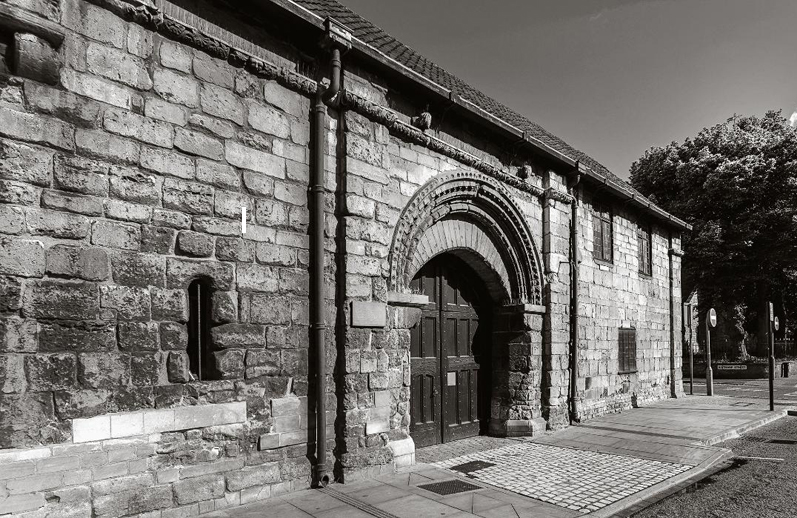
West Range of St Mary’s Guildhall

West Range of St Mary’s Guildhall
St. Mary’s Guildhall is located 1.5 km of Lincoln Cathedral and in the Medieval period the area was a long narrow island which was defined by watercourses. To the west and north was the River Witham, which now follows a narrow channel created in the late 18th century, but which was a much wider river in the Middle Ages.
There is a highly decorated central gate arch which is the centrepiece of the west facade and which consisted of five bays and has shallow buttresses with chamfered plinth and a band of Romanesque sculpted decorations.
St. Mary’s consists of three ranges: the West along the High Street and running back from it in the Courtyard area is the North Range and South Range (Sibthorpe Street) which is more modern and was built around 1895 when Sibthorpe Street was laid out. The West Range survives in an incomplete state and was a building of the very highest quality both in its design and execution and was built of Lincolnshire limestone (possibly used from local quarries).
The Courtyard area is the space south of the North Range and east of the West Range and probably functioned as a partially enclosed area as a meeting point.
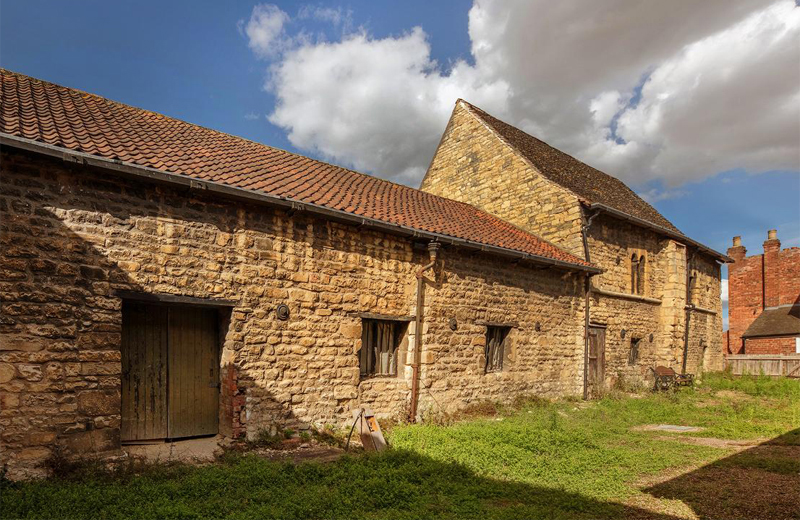
North Range & Courtyard Area
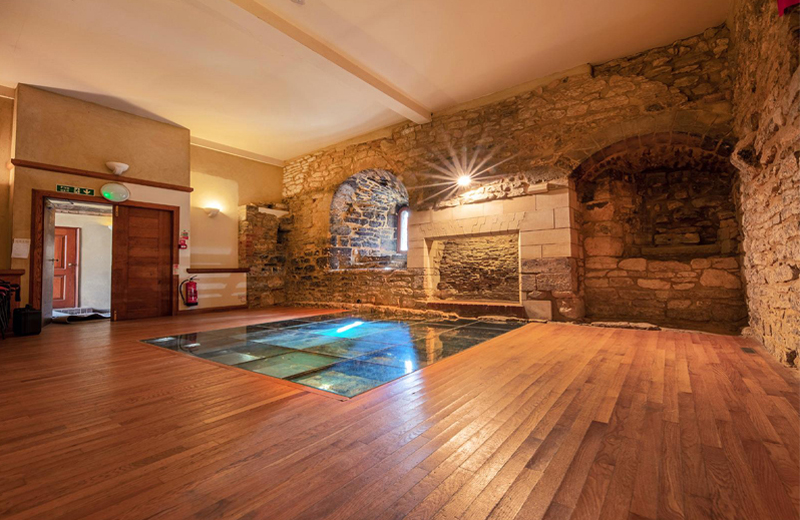
Lower Hall – West Range
On the site of the Lower Hall, West Range shows that St Mary’s Guildhall complex was built on top of a major Roman road running under the eastern (Roman Ermine Street) and western boundaries of the site which is known as the ‘Fosse Way’ of which you can see, still to this day, visually the carriageway ruts. This road originally linked Exeter in the south-west and Lincoln to the north-east. There is also a doorway to the newel staircase.
The North Range (possibly two storeys high) was evidently part of the first complex of buildings which has also been, in parts, demolished but the precise date of this is uncertain. The North Range does incorporate many fragments of architectural detail which must have come from some of the used stone. The range seems to have been used as a Malting house at a later date. There may have been a kiln which would have been the centre piece of the North Range, which is reported to have been removed at a later date.
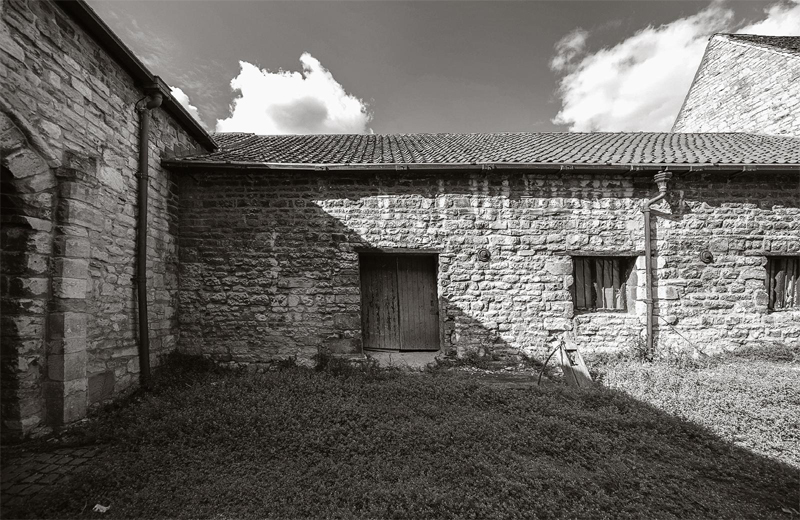
North Range

Norman House (Courtyard area)
There is a two-storey building and on the ground floor the building has two doorways and two windows in the south wall with a single window in the north, whilst upstairs, underneath there is a simple oak roof. There are also two reused windows in the south wall on either side of a fire place and a third in the north wall. The use for this building is not entirely clear and it may have intended to be used as domestic premises.
St. Mary’s Guildhall was built probably by Henry II for a Crown Wearing Ceremony and used as a royal residence and Storehouse as there are records of King Henry III selling wine from this building in about 1236.
The building was then given to the King’s butler and after his tenure he then gave it by charter to the Great Guild of St Mary – a socio-religious Guild.
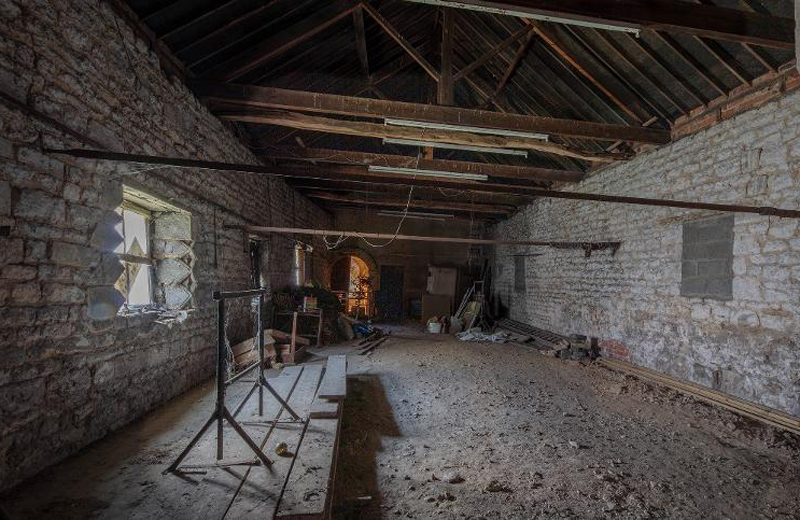
North Range – taken from the opposite end of the building

North Range- taken from the entrance of the Lower Hall
It was one of the major ‘Guilds’ of the Country and had very important members of the community and area of Lincoln and would have had King Henry III as a member. The Guild was dissolved through King Henry VIII and the property income then went to the Common Council, known today as the City of Lincoln Council.
The City Council have previously rented it out for commercial uses such as chimney sweep, undertakers, maltings, brewery, Christ Hospital School (Bluecoates – 1614-1623) and lastly as a builder’s merchants – C R Lucas & Son Ltd.
The Great Hall was for the use of banquets, Guild meetings and the room would have been at least 15 inches higher and probably running the full length of the building and would have been the grandest room in the West Range.
One of the most striking features of the Hall are the row of windows which are divided by a central shaft and have adapted window seats.
There is also the remains of an impressive large fireplace and on the north wall of the hall is an impressive blind arcade supported by very elaborate capitals carved with acanthus foliage. At the end there is also a newel stair which emerges from the Lower Hall which could have been a private access to the Hall.
Today Lincoln Civic Trust reside in the building looking after its usage for Community purposes and the Lower Hall and Great Hall can be hired out as a venue (parties/wedding receptions, musical evenings, Tai Chi etc) or as a meeting room or booking for just a look around this majestic medieval hidden gem.
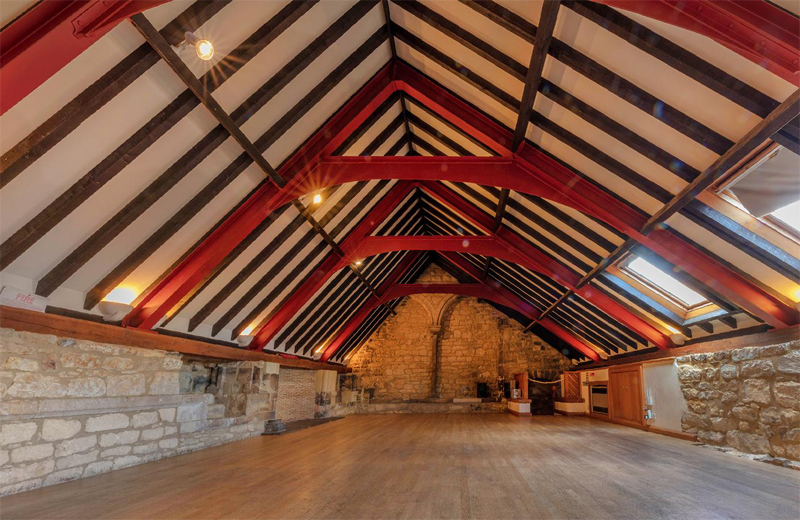
The Great Hall
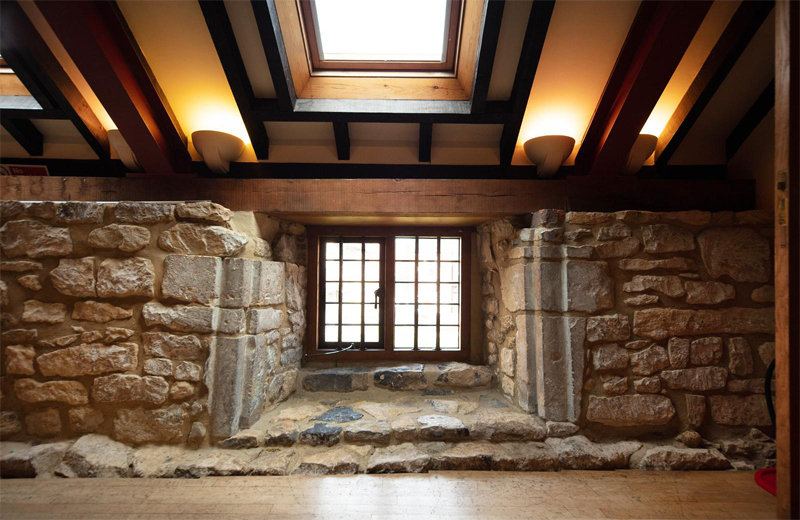
The Great Hall – Window looking into the Courtyard area
Credits to:
David Stocker (with contributions from various other people) – St Mary’s Guildhall, Lincoln – The Survey and Excavation of a Medieval building Complex.
Paul Whitelam – Lincolnshire Live (https://www.lincolnshirelive.co.uk/news/lincoln-news/st-marys-876057) and from Lincoln Civic Trust publication “St Mary’s Guildhall, A Brief Historical and Archaeological Description” by CPC Johnson/D A Stocker – 1986.
Stu Williamson Photography Ltd (Leicester) for photographing the building.
If you require any further information please contact the office.
Phone
VISIT
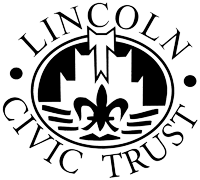
Preserve | Develop | Protect
Address
St Mary’s Guildhall
385 High Street, Lincoln
LN5 7SF
Lincoln Civic Trust Ltd is a company registered in England and Wales with company number: 527492 and registered address: St.Marys Guildhall, 385 High Street, Lincoln, LN5 7SF.
Registered Charity Number: 249420
